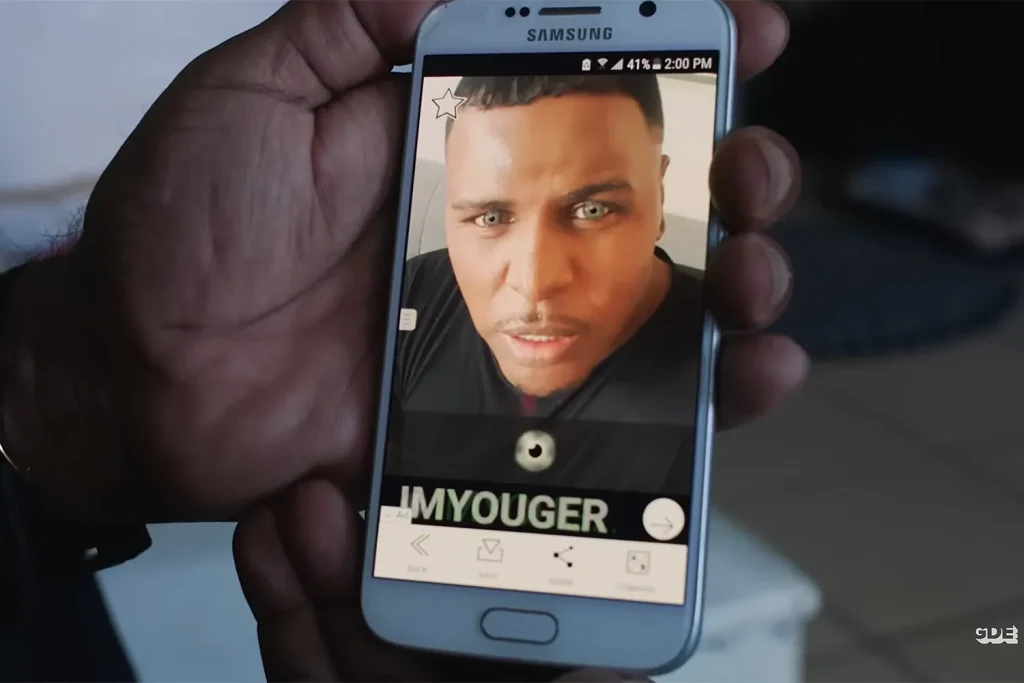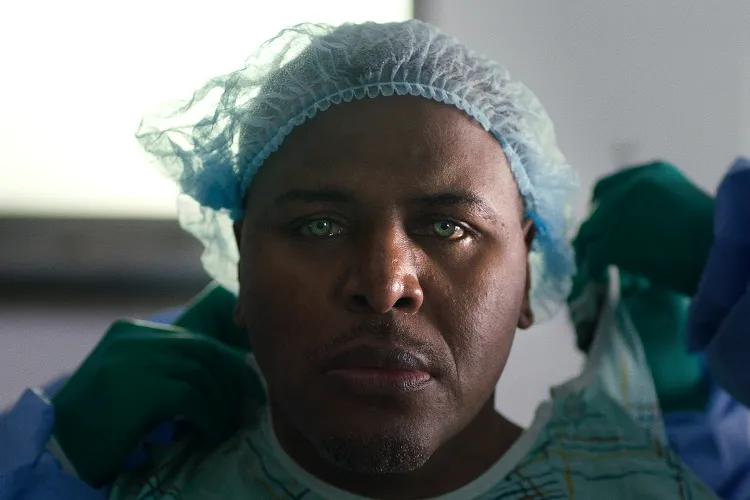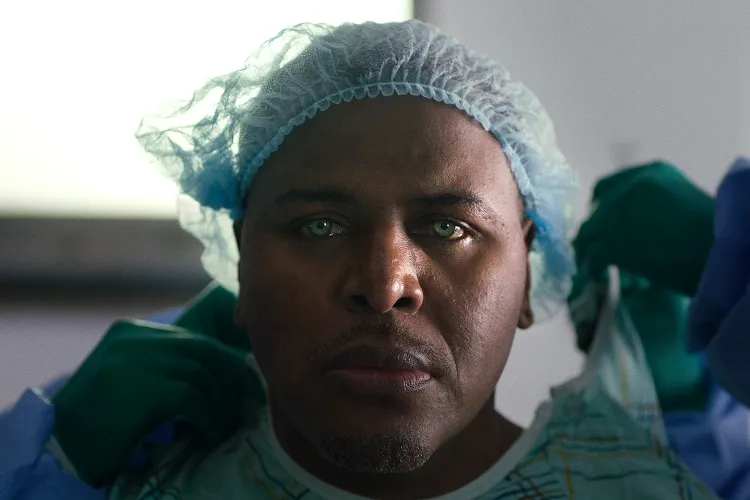After Changing His Eye Color Through a Risky Overseas Implant Operation, a Biracial Man Faces a Shocking Physical and Emotional Toll
When David Taylor agreed to fly halfway around the world to change the color of his eyes, he was chasing more than a new hue. He was chasing a transformation of identity, belonging, and self-worth. The recently released documentary Caterpillar, directed by Liza Mandelup, follows Taylor’s journey from desperation to hope, and ultimately into a terrain of complication, regret, and resilience. While his story begins with the promise of something beautiful, it becomes a cautionary tale about the hidden cost of chasing cosmetic perfection.

Taylor, a biracial man raised in Miami, explains that his decision to pursue an artificial iris-implant surgery was not simply aesthetic. As he shares in the film, feeling other than “brown-eyed,” navigating experiences of racism, and internalizing the legacy of his late father—who had green eyes—fueled the longing within him. In a social-media-driven environment where beauty is increasingly framed as currency, Taylor sought not just lighter eyes but a lighter load, a pathway to more acceptance.
Enter BrightOcular, a company that markets a permanent colored iris implant—a thin silicone disc meant to sit atop the natural iris and create dramatically lighter eye colors. The procedure is unapproved by the U.S. Food & Drug Administration (FDA) and is offered primarily in clinics abroad, including India. Unable to afford the procedure, Taylor was offered it at no cost in exchange for promotional content. He accepted. What followed would test him in ways he could not have anticipated.
In the film, we see Taylor arrive in India alongside other patients, each hoping this one bold change will ripple into the rest of their lives. The credentials are glossy, the imagery alluring, the promise seductive: “See the world differently,” as the marketing suggests. For Taylor, the mental ledger read like this—brown eyes were a burden; green or gray eyes might unlock a new version of himself, maybe a version with less pain, less doubt, less shame.
Yet from the operating room onward, cracks emerge. The documentary captures a startling mistake: Taylor receives the wrong color implant—jade green instead of the “frost gray” he requested. He tries to make sense of it in real time. In the middle of the fantasy of transformation, basic errors surface.
He soon becomes aware that the change he hoped would fix everything doesn’t quite. He begins to experience headaches, light sensitivity, and persistent watering of his eyes. An eye specialist tells him the implants are “just sitting somewhere where there’s no anatomical place for them to sit” and suggests removal. But Taylor doesn’t have the funds. The dream of “better” has turned into a gamble on his eyesight.

Here lies the heart of the story: clean surfaces versus messy realities. Taylor did not head into this decision lightly. He openly reflects: “This is scary, this s— is scary… another operation,” even while acknowledging, “The eyes don’t make me. I’m growing into the person I want to be.” The film presents his transformation not only in visual terms but in emotional ones. By choosing to alter his eyes, he also embarked on a deeper exploration of self-acceptance, identity, and the wounds that spur such drastic measures. Director Liza Mandelup says she was drawn to the idea that “eyes feel like they are something that is you… It’s not supposed to be linked to vanity; it’s supposed to be linked to your identity, your DNA.”
The larger context is troubling. Independent research and doctors warn that cosmetic iris implants, including newer BrightOcular-type devices, have severely detrimental effects on corneal integrity, increased eye pressure, risk of glaucoma, inflammation, and loss of cells around the cornea. One 2018 study described a patient who lost vision nearly two years after implantation. So while Taylor’s story is highly personal, it also speaks to a broader phenomenon—the booming, largely unregulated world of medical-tourism cosmetic procedures, the influencer-fueled promise of a “new you,” and the precarious line between self-care and self-harm.
Taylor’s life post-surgery is telling. He moves to New York City, reconnects with friends, defends himself to his mother, and begins to inhabit a version of himself with more agency. The new eyes do not deliver a flawless life. But in accepting the unexpected consequences—the wrong color, the looming medical costs, the uncertainty—he also confronts the core question he came seeking to answer: is it the eyes that limit you, or is it the stories you tell yourself about being limited? In a Q&A, he reflects that despite complications, “I’m happy that I got to try a dream.”

Critics of the documentary highlight how it reveals the underbelly of aesthetic culture. As one reviewer puts it, “Changing your eyes will make you a butterfly? Guess.” The procedural sales pitch offered to patients skirts deep medical risk; the documentary exposes the bargain: a cast of mostly non-Caucasian patients seeking lighter eyes in a world where lighter features still carry symbolic power.
There is no neat resolution. Taylor may still have medical ambiguity ahead. The risk is real. But there is a shift—from hoping the eyes change the world to recognizing that he is the one doing the work. In the film’s haunting final frames, we are left with the image of the implant subject to removal, of eyes that might see anew—not simply because they were colored differently but because the man behind them has begun to look inward.

For readers, Taylor’s story raises questions: How far would you go to feel seen? At what cost? And what happens when the version of “better” you were sold turns out to be someone else’s script? In a culture increasingly obsessed with filters, edited angles, and surgical “solutions,” his narrative is both human and urgent. It reminds us that identity isn’t a makeover. It’s a transformation of understanding the self behind the eyes, not just the eyes themselves.
The moving, uncomfortable, hopeful path of Caterpillar may not supply easy answers. It shows that sometimes the hardest changes aren’t the ones made visible to the world, but the ones made invisible within. Taylor’s jade-green irises glint in the frame like both a reward and a warning: the shine of possibility—and the shadow of cost.


